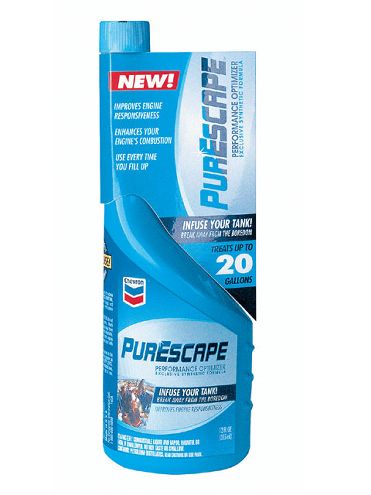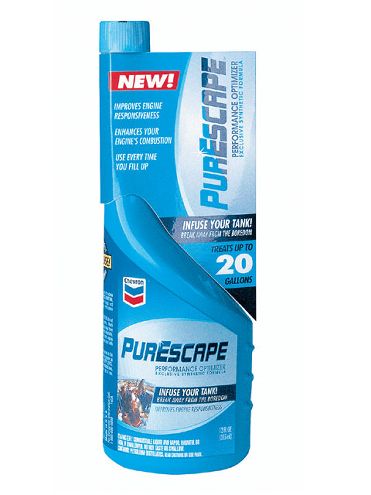

When compared to a vintage carburetor, modern, computer-controlled fuel injections seem almost maintenance-free. However, modern fuel-injected engine packages have fuel-related components, such as the fuel pump, filters, and injectors, that need maintenance from time to time.
How do you know when fuel injectors need service?Because port fuel injectors are located in a very hot area in the engine, they are subject to deposit buildup problems created by the high temperatures the fuel is exposed to. When deposits foul the injectors, fuel flow is restricted, and the spray pattern is distorted. As a result, there will be a gradual loss of engine performance, a stumble/hesitation on acceleration, or both. Dirty injectors can also hinder fuel economy. And while these problems normally appear over time with miles of driving, one bad tank of gasoline can quickly dirty the fuel injectors.
When the fuel injectors' condition is questionable, shops commonly use a computer scan tool to check them. The data from a scan tool reads the amount of fuel trim correction the engine's computer is making to the fuel injector on time so the engine has the correct air/fuel mixture for your driving conditions.
Keeping Injectors Flowing ProperlyIn theory, all the injectors should flow the same volume of fuel to each cylinder, but that is not always the case. Fuel injector production lines allow a +/- 2 percent flow variance, but sometimes one outside the normal flow tolerances will get through. And as we've said, fuel flow will change as the fuel injectors are dirtied or restricted from use and fuel-related contamination. Obviously, an engine performs best when each cylinder has the correct air/fuel mixture, but when the injectors' flow varies, the air/fuel mixture delivered to each cylinder of the engine will vary as well. And when that variation gets in the range of 6 to 8 percent, the engine's power and drivability suffers.
The best preventive medicine to keep fuel injectors clean is gasoline with additives that prevent deposit formation. That's why many car manufacturers recommend gasoline that conforms to the new "Top Tier" standards, which has detergents that help keep fuel injectors clean. Many major brands are now being blended to the Top Tier standards. Using an in-tank fuel injector cleaner such as Chevron's Techron or Techron Plus when you change your engine oil is also good preventive maintenance.
Another preventative measure when parking your street rod for the winter, or any time the fuel will remain in the tank for more than two months, is gasoline storage stabilizer such as Gold Eagle's Stabil. As gasoline ages it turns into a gummy, varnish-like substance that may cause the fuel injectors to stick open or closed, restricting fuel flow or plugging it completely. And the only way to clean fuel injectors that have been exposed to bad gas is to remove them and service them with an ultrasonic fuel injector cleaning system-or replace them completely.
Diagnosing The FuelInjection SystemFor those who have a factory-style fuel-injected engine in a street rod, the best way to diagnose the fuel injection system is with a scan tool. You can take a fuel-injected street rod to a qualified shop with all the latest diagnostic tools. But if you want to do the work yourself, there are many low-cost computer scan tools on the market. The long-term fuel trim data from a diagnostic scan tool can show how much the computer is adjusting the fuel injector on time so the engine has the correct air/fuel mixture. As the fuel injector flow is restricted and the fuel injectors are dirtied, the computer will attempt to adjust the fuel flow by opening the fuel injector longer with the long-term fuel trim. This is a good sign that the fuel injectors need to be serviced. Also, the engine misfire data from a diagnostic scan tool can determine how much each cylinder is misfiring. If the misfire data is high for any cylinder, that cylinder has a problem that must be diagnosed. It could be a fuel injection-related problem such as a leaky or restricted injector. In either case the suspect injector would be supplying the misfiring cylinder with the wrong air/fuel mixture. The misfire problem could also be caused by a vacuum leak, ignition, or engine mechanical problem. In any case, before replacing any parts, diagnose the problem.
The engine's computer assumes the injectors are flowing the same amount of fuel as when it was programmed at the factory. If replacement injectors (or contaminated originals) do not flow the same volume of fuel as the originals, the air/fuel mixture will not be correct during open-loop operating conditions, such as wide-open throttle acceleration and engine warm-up. When operating in closed loop, the computer will adjust the air/fuel mixture. The percentage of correction can be read as short- and long-term fuel trim on a diagnostic scan tool.
Checking TheFuel InjectorsThere are several methods to check the fuel injector flow, but the best and most accurate is to test them on a flow bench. Each injector's fuel flow at any load or engine speed can be tested, as well as comparing all the injectors to one another. A new tool we have been using from SenX Technology, the FirstLook Diagnostic Sensor, can check the fuel pressure drop in the fuel rail as each fuel injector opens without removing the fuel injectors from the engine. If the fuel injectors are not flowing the same, the sensor can read the fluctuations in fuel pressure.
Not all fuel injectors are created equal. Ideally, each fuel injector would flow exactly the same, but holding a production line to that standard would raise the cost of the fuel injectors substantially. As we've said, new OEM fuel injectors are held to a +/- 2 percent production flow variance, but replacement aftermarket fuel injectors aren't always built to those standards. Due to part number consolidations in the aftermarket, fuel injector flow rate can vary as much as 25 percent.
A common problem street rodders may encounter is with the fuel injectors used in the Tuned Port engines General Motors produced from '85 through the early '90s. The insulation on the fuel injector coil windings sometimes deteriorates, causing the injectors to short-circuit as the gasoline attacks the exposed conductors. The problem can vary from an occasional one-cylinder miss to total fuel injector failure. If you replace one fuel injector due to fuel leakage or a shorted coil, it may be best to replace the whole set. After all, if one failed due to the fuel-related deterioration of the internal O-rings or the insulation on the fuel injector's windings, the other fuel injectors may also fail.

Cleaning FuelInjectorsIf the fuel injectors are dirty or leaking, there are several options available: 1) Pour a fuel injector-cleaning chemical into the fuel tank. We have had very good results with in-tank fuel injection cleaners such as Chevron's Techron or Techron Plus. Customers have told us they feel a noticeable increase in power with just one tank of gasoline treated with the cleaning solution. The in-tank fuel injector cleaning method does not allow you to check the fuel injector spray pattern, and the filter built into the injector may become plugged with any contaminants washed into the injector. If the in-tank method does not supply the desired results, a more aggressive method may be necessary.
2) Run a cleaner through the fuel rails and injectors; this method allows a stronger mix of chemicals than you could put in the gas tank. This method can do a good job, but again, it does not allow you to check the fuel injector spray pattern and the filter built into the fuel injector may still need to be serviced.
3) The preferred method for cleaning injectors is an ultrasonic fuel injector cleaner/fuel injector flow bench. This process involves cycling the fuel injectors while the fuel injector tips are immersed in an ultrasonic bath that uses an environmentally friendly cleaning fluid to clean the fuel injectors. A fuel injection cleaner/fuel injector flow bench also allows the technician to see the spray pattern and observe the volume of fuel flow that each injector supplies at any rpm. If the spray pattern varies from injector to injector and the ultrasonic cleaning bath does not correct it, the fuel injector must be replaced.
When replacing injectors, we recommend installing flow-matched sets, or flowing the new injectors to ensure they are all the same. When the fuel injectors are flow-matched, you can be sure each cylinder of the engine has the correct air/fuel mixture.
The Clean ResultsWhen all the fuel injectors are flowing the correct amount of fuel to each cylinder, the engine's performance will be at its best, providing maximum power and fuel economy. Fuel injector maintenance and service are very important parts of proper vehicle maintenance. Often just using an in-tank fuel injection cleaning chemical can help prevent a problem from even starting, but choose the fuel injector cleaning method that solves the problem, and don't forget to change the fuel filter.